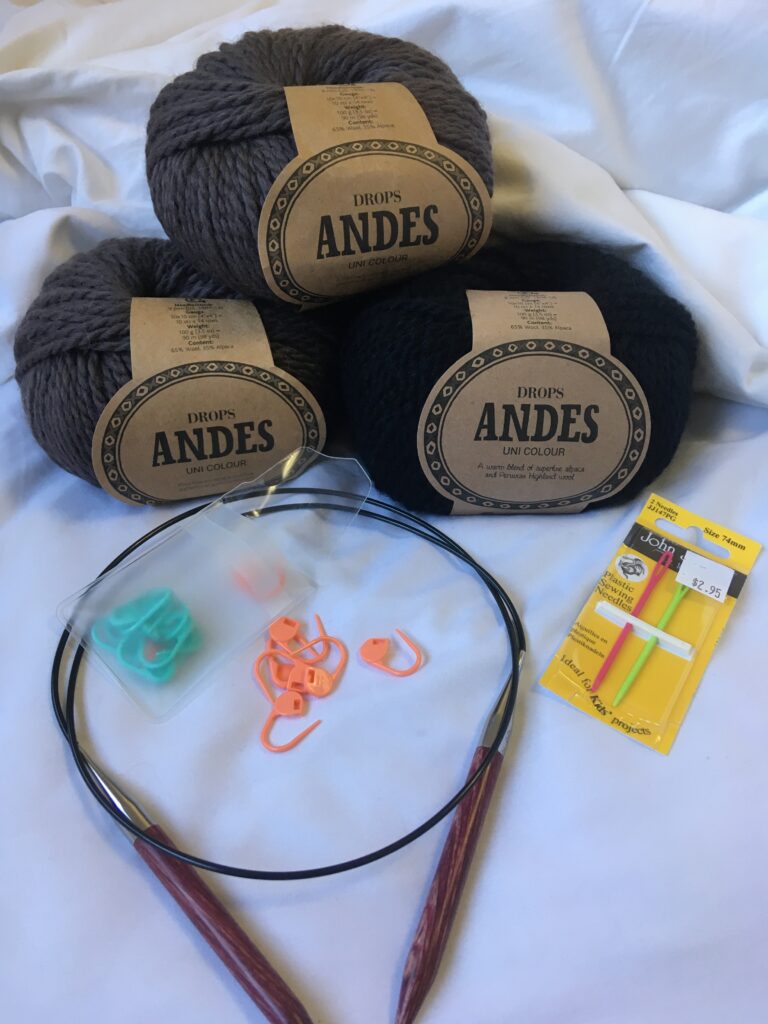For my free inquiry project, I have decided to knit a shawl. While I have done a few other knitting projects before, they have all been very simple scarves and I am excited to start a project that will be more complicated than making a rectangle.
The shawl I am making is called a “Sontag shawl” which is a triangular shawl that hangs over your back, crosses in front of your body and then is tied behind your back. To find out more about the history of the Sontag shawl, I read through many different knitting blogs on the subject. Kate Davies from KDD & Co (https://kddandco.com/2013/06/28/sontag/) writes that Sontag shawls were became popular in the 1860s. She gives the photo on the top of a women in the Victorian era wearing a Sontag shawl as a historical example but notes that this style of shawl is still worn and can even be seen on modern runways like in the photo on the bottom.


Many other historical photos of the Sontag Shawl can be found in Jeanne’s post on A Bluestocking Knits (https://mathomhouse.typepad.com/bluestocking/2016/01/sontags-in-three-original-patterns-and-a-collection-of-period-photographs.html).
After reading through many patterns on a knitting website called Ravelry I finally decided on a pattern by an artist called Von Poppie. I chose her pattern both because I liked the look of the final project, and because in addition to her written pattern she had also created a series of video tutorials on TikTok to help beginner knitters with this project.
After deciding on the pattern I needed to find my yarn. While the artist suggests a type of yarn that would work well with the pattern, I did not want to use it because the yarn she suggested was 20% wool and 80% acrylic. I knew I wanted to make my shawl out of entirely natural fibres and chose wool because of the many benefits of this fibre. A blog called “Sustain my Craft Habit” (https://sustainmycrafthabit.com/eight-wonderful-benefits-of-wool-yarn/) explains some of the benefits of using wool. They explain that wool is absorbent, good at keeping in heat, fire retardant, mildew resistant, durable and sustainable.
In order to find a wool yarn that would work, I needed to find a yarn that was a similar weight to the yarn the pattern was meant for. I went to the Beehive Wool Shop in downtown Victoria to ask for help. One of the workers was able to help me. After a lot of research I had decided that the Andes yarn from the company drops was a likely fit. It was a similar weight and thickness, sold at my local yarn store so I could see and feel it before buying it, and made out of 65% wool and 35% alpaca. I like Alpaca fibres because they tend to be softer and less scratchy than regular wool. After looking at my pattern the shop worker agreed that it would be a good fit. I bought the wool, as well as the other supplies I need like a pair of large circular knitting needles, ring markers, and a tapestry needle for weaving in the ends.

Next week I will start knitting the project.